How often have you read a book that mentions a specific species of tree, or even a whole forest, and you breeze on past, vaguely picturing a bit of greenery as you go?
Maybe some of you have done so from time to time. As it happens though, trees and the natural environment can give such an aura of magic, mystery, foreboding, grandeur, beauty and more. Being able to conjure up an image in your head when these trees are mentioned is only going to help with the immersion and building a picture in your mind of the setting the author has created.
There are over 60,000 different species of tree in the world, and they vary by biome, continent, country and even by region. It would be too grand an undertaking to write a comprehensive international feature. Many of these European trees are spread throughout the world though, and some are actually indigenous to or more populous in other continents.
If you’re a fantasy reader especially, the popularity of medieval Europe inspired settings means you’ve probably encountered quite a few of these. And whilst new races, animals and religions are often created from scratch, the species of trees often stay the same as the ones we have. With fantasy often also inspired by folklore and mythology, many of these trees have a significant role to play in European folklore and culture.
Here are a selection of some of the most popular, with added depth and information for some of the big players in fantasy and folklore to start off with…
Dule Tree
A Dule Tree isn’t a species – although it needs to have sturdy branches above a few feet in height. It’s one you might often come across in fantasy, especially darker novels.
They were used as gallows for public hangings, rather than erecting a scaffold. They were also used as gibbets to display the corpse for a long period after these hangings. The trees were often in a prominent position, by a lord’s estate, a common area where a lot of people would pass or a crossroads, to warn others against breaking the law and to show that justice was done.


Oak
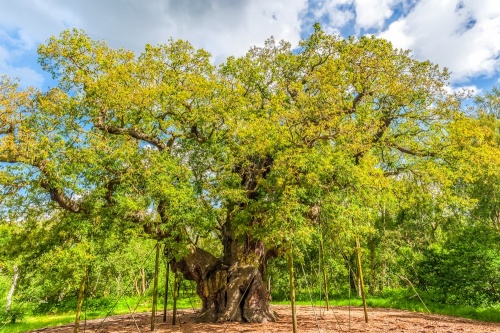
The oak tree is a recurring species throughout fantasy, folklore and myth. There are actually over 500 subspecies of oak, which are nearly all deciduous (they lose their leaves in winter).
Oaks are particularly prominent due to their large size and imposing appearance, growing up to 70 feet in height and 9 feet in width. Its branches can reach as long as 135 feet!
Oaks start to produce acorns once they are 20-50 years old, and although they produce 2,000 acorns per year, only around 1 in 10,000 acorns will actually end up becoming a new oak.

Oaks endure, and most of the oak species live well over 200 years. Some can even live for 1,000 years. Many countries have the oak as their national tree, including Bulgaria, Croatia, Cyprus (golden oak), England, Estonia, France, Germany, Moldova, Jordan, Latvia, Lithuania, Poland, Romania, Serbia, USA and Wales.
Despite being an iconic tree throughout much of Europe, North America has the largest number of oak species, with approximately 160 species in Mexico and about 90 in the United States. The second greatest area of oak diversity is China, with approximately 100 species. Perhaps the oldest living oak is the Pechanga oak in California, estimated to be 2,000 years old.

In Norse mythology, the oak is sacred to the God Thor. In fact, to the Greeks, Romans, Celts, Slavs and Teutonic tribes the oak was ‘top of the tree’ so to speak, with the tree being sacred mostly to the supreme god in their respective pantheons; Zeus, Jupiter, Dagda, Perun and Thor had a special affinity with the oak. Curiously, each of these gods also had dominion over rain, thunder and lightning. It is no coincidence that oak trees are more prone to lightning strikes than many other trees. This is due to the tree’s high water content and the fact that they are frequently the tallest living things in the landscape.
Oak trees are often the centrepieces of haunted woods in spooky stories, their ancient, twisted branches witness to the passing of time over many centuries.
Ash
Yggdrasil, the World Tree in Norse mythology, grew on an island surrounded by the ocean, in the depths of which the World Serpent lay. This ash tree’s trunk reached up to the heavens, and its boughs spread out over all the countries of the Earth, its roots reached down into the Underworld. A squirrel ran up and down the tree carrying messages from the serpent gnawing at the roots to the eagle in the canopy, and back. A magical goat grazed by the tree, and its udders dispensed not milk but mead for the warriors in Odin’s Great Hall. The gods held their councils under the canopy of their guardian tree.

Odin, the foremost god of the Vikings, hung himself on Yggdrasil as a sacrificial ordeal, during which he lost an eye to ravens. Ultimately though, he was rewarded with insights and wisdom, notably knowledge of the system of the Runes. Both he and Thor, the god of thunder, possessed magical spears made of ash wood. Mortals’ spear shafts were also typically made of ash.
The words for ash and spear seem to be related in that a poetic Anglo-Saxon word for spear was aesc and the Norse word for ash was ask. These words influenced Highland place names such as Port Askaig. The Vikings were also referred to as the Aescling meaning ‘Men of Ash’.
Like the Vikings, the Gaels also thought of the ash tree as protective. Of the five legendary guardian trees of Ireland, three were ash. Ash is also the second most popular tree growing beside Irish holy wells, and on the Isle of Man ash trees were said to protect the purity of springs. In England the ash is the commonest tree as a place name element after the thorn.
In British folklore the ash was credited with a range of protective and healing properties. Most of these were related to child health. Newborn babies were popularly given a teaspoon of ash sap. Ailing children, especially those suffering with rupture or weak limbs, would be passed naked through a cleft in an ash tree or ash sapling, to cure them. The cleft was often made for the purpose and bound together again after the ceremony to heal over as the child also healed. Some folklore then suggested an intimate bond between the welfare and fate of the tree and person. Harm to the tree was reflected in the healed person’s life, leading people to become understandably protective of ‘their’ ash tree.
Elm
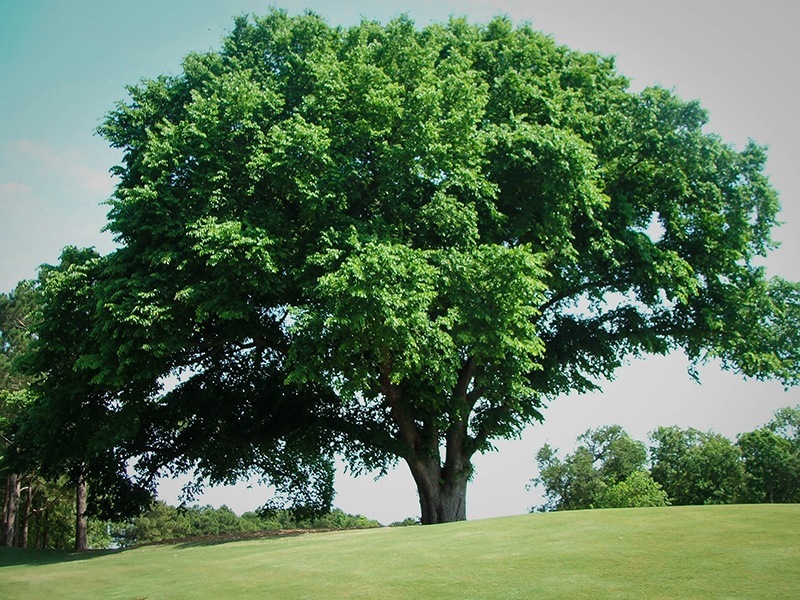
In Celtic mythology, elm trees were associated with the Underworld. They had a special affinity with elves who guarded the burial mounds, their dead and the associated passage into the Underworld.
In Greek mythology too, the hero Orpheus rescued his beloved wife Eurydice from the Underworld by enchanting everyone there with his harp music. He then paused to play her a love song, at which spot the first elm grove was said to have sprung up.
Elm trees in Britain can grow to become some of the tallest and largest native trees. Like oak trees they often had very specific customs and folklore attached to individual, named trees.
Elm wood doesn’t make for great fuel, or as a building material due to its bendy nature. Responding well to wet conditions however, it was a popular choice for boat building and for the famous Welsh Longbows.
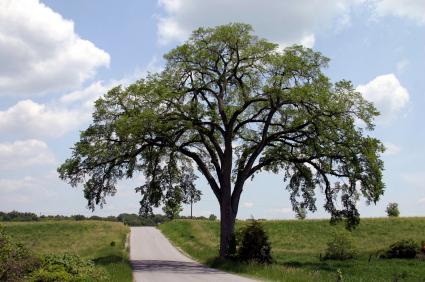
Sycamore

A tall, domed tree of woodlands, hedgerows and parks, the sycamore is familiar to many of us as the ‘helicopter’ producing tree – its large, winged fruits appearing in autumn.
Historically it was made into boxes to hold food as well as fruit and vegetable baskets. Other early uses included barber poles, wooden washing machines and lard pails. It has been used for butcher blocks for many years because it is hard to split, as well as flooring, handles, and pallets.
Sycamore trees grow so large they often have hollow trunks; these trunks have been used throughout history for various purposes including shelter for both people and animals and storage.
Horse Chestnut

The most famous use of horse chestnut is in the game of conkers. The first record of the game is from the Isle of Wight in 1848.
Horse chestnut timber is a pale creamy-white to light brown, with a smooth, soft, fine texture. It’s not very strong and is therefore not used commercially, but its soft texture makes it ideal for carving.
Other uses of the conkers include horse medicines, as additives in shampoos, and as a starch substitute. Chemicals extracted from conkers can be used to treat strains and bruises. There’s hearsay that if you place conkers around your house it will keep spiders away, but there’s no scientific proof that this is the case.
You won’t find much in the way of mythology when it comes to horse chestnuts, as they are an introduced species from Turkey, not often found in woodland but relatively common in parklands.

Spruce

The spruce is a fast-growing evergreen conifer which can reach 40m and live for up to 1,000 years. They are tall and straight and of a triangular appearance, with a pointed crown – you might recognise them as the standard Christmas tree. The widespread use of the spruce as a Christmas tree is down to Prince Albert, husband of Queen Victoria. In 1841, he introduced an old German custom of decorating a spruce tree with candles. Since then, the (Norway) spruce has been used as a Christmas tree across Europe.
It is native to mountainous areas of Europe and was originally from Scandinavia.
Pine

Pine trees can be found growing in altitudes of up to 4,000 meters (13,000 feet).
They grow well in sandy or well-drained soil and fully grown trees require full sun and very little water to survive. You’ll often find pines growing up mountainsides.
The size of the pine depends on the species. They can reach from 10 to 260 feet tall, with the majority of species reaching from 50 to 150 feet tall.

The wood of pine trees is used in the manufacture of panelling, window frames, floors, roofing, furniture.
Pines, along with the above mentioned spruce, and fir trees, are also commercially grown and harvested for Christmas trees.
They have a sharp, resinous smell that comes from their bark and needles.
Larch

Larch trees are large deciduous trees with short needles and cones. The needles are only an inch (2.5 cm.) or so long, and sprout in little clusters along the length of the stems. Each cluster has 30 to 40 needles. Tucked in among the needles you can find pink flowers that eventually become cones. The cones start out red or yellow, turning to brown as they mature.
They grow best in mountainous areas but tolerate any cool climate with plenty of moisture.
Unlike other coniferous trees, larch sheds its leaves during the autumn. Needles change their color into yellowish golden before they fall from a tree.
In some European cultures, the wood of the Larch was used in times past to protect from evil spirits.

Aspen
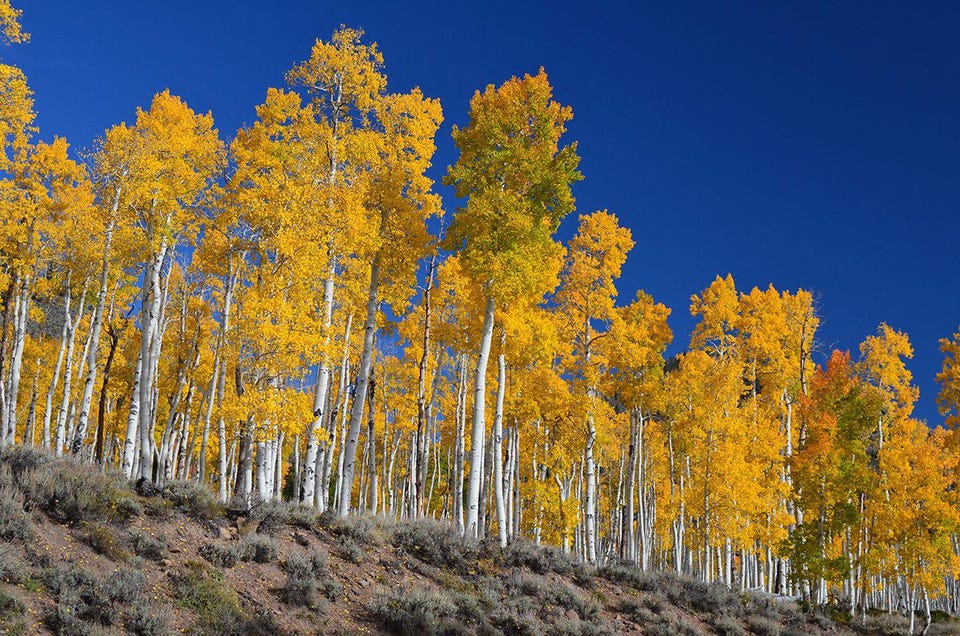
Of old the aspen was a tree of heroes, whose crowns of trembling leaves gave them the power not only to visit the Underworld, but also to return safely.
Similarly, the aspen crowns people placed in ancient burial mounds may have been to allow the spirits of the deceased to return to be reborn.
Aspis, the aspen’s Greek name, means shield and amongst the Celts its lightweight wood was indeed favoured for making shields. These shields were more than mere physical barriers between warrior and enemy. People thought they had magical qualities to safeguard the bearer from psychic as well as physical harm. The protective nature of the “shield tree” extended to the general population too. Like the rowan, it was a popular choice of tree to plant close to a dwelling. Aspens were also said to be able to protect buried treasure.
On a practical level the aspen’s uses to humanity have been limited. Aspen wood is very lightweight when dried, becoming especially buoyant and was thus a popular choice for oars and paddles. Its lightness also made it useful for surgical splints and wagon bottoms. Its softness and lightness, though ideal for sculpting, are not suitable for use in building. However floorboards were sometimes made of aspen as a safety measure, as aspen wood does not burn well. Aspen shoots and leaves are popular with grazing animals, and hand gathered aspen leaves were fed to cattle when other food was scarce.

Beech

Beech is associated with femininity and is often considered the queen of British trees, where oak is the king.
The very first books were made of beech wood, where the beech would be thinly sliced and bound together. A triad of physical connections now exist with the beech tied to books and learning: its ancient connections to the physical book, the creation of bistre from beech soot, and the physical face of the tree used for carvings, a triad of connections to books and learning.
Beech has connections to many deities associated with trees: Ogma, the Celtic warrior god of the Tuatha De Dannan, who is credited with inventing the Ogham. Beech is also connected with Hermes/Mercury (the messenger), Odin (the supreme God of the Norse, who gave the gift of runes), Chronos (the Greek god of Time and cycles); and Thoth, the Egyptian god of wisdom and mathematics. We can see clear themes emerging: the beech associated with divination tools, learning, wisdom, and other kinds of messages.
All beech trees seem to have the genetic potential to be purple. But the gene is usually ‘switched off’, so each year the tree produces green leaves. The naturally occurring mutation appears spontaneously, without human interference.
In a few beech woods in the UK, you may even come across a copper beech growing among green beeches.

In County Antrim, an avenue of ancient beech trees known as The Dark Hedges is one of the most photographed spots in Northern Ireland. At the grand old age of 244, the avenue has found recent fame after featuring as the Kings Road in the TV series Game of Thrones.
Willow

The willow can sometimes grow to the height of 70 feet. Most willows can reach 35 to 50 feet in height and develop the crown of the same size. Raindrops that fall to the ground from the drooping branches of willow resemble tears, which is where the weeping willow gets its name.
It is often found near the lakes and ponds or planted in gardens and parks because of its ornamental morphology. Willow trees are associated with mysticism and superstition and according to legend, witches crafted brooms using the branches of the willow tree.
Unlike some of the other trees featured here, you won’t find an ancient living willow that’s survived throughout history. Most willows only live around 30 to 50 years.
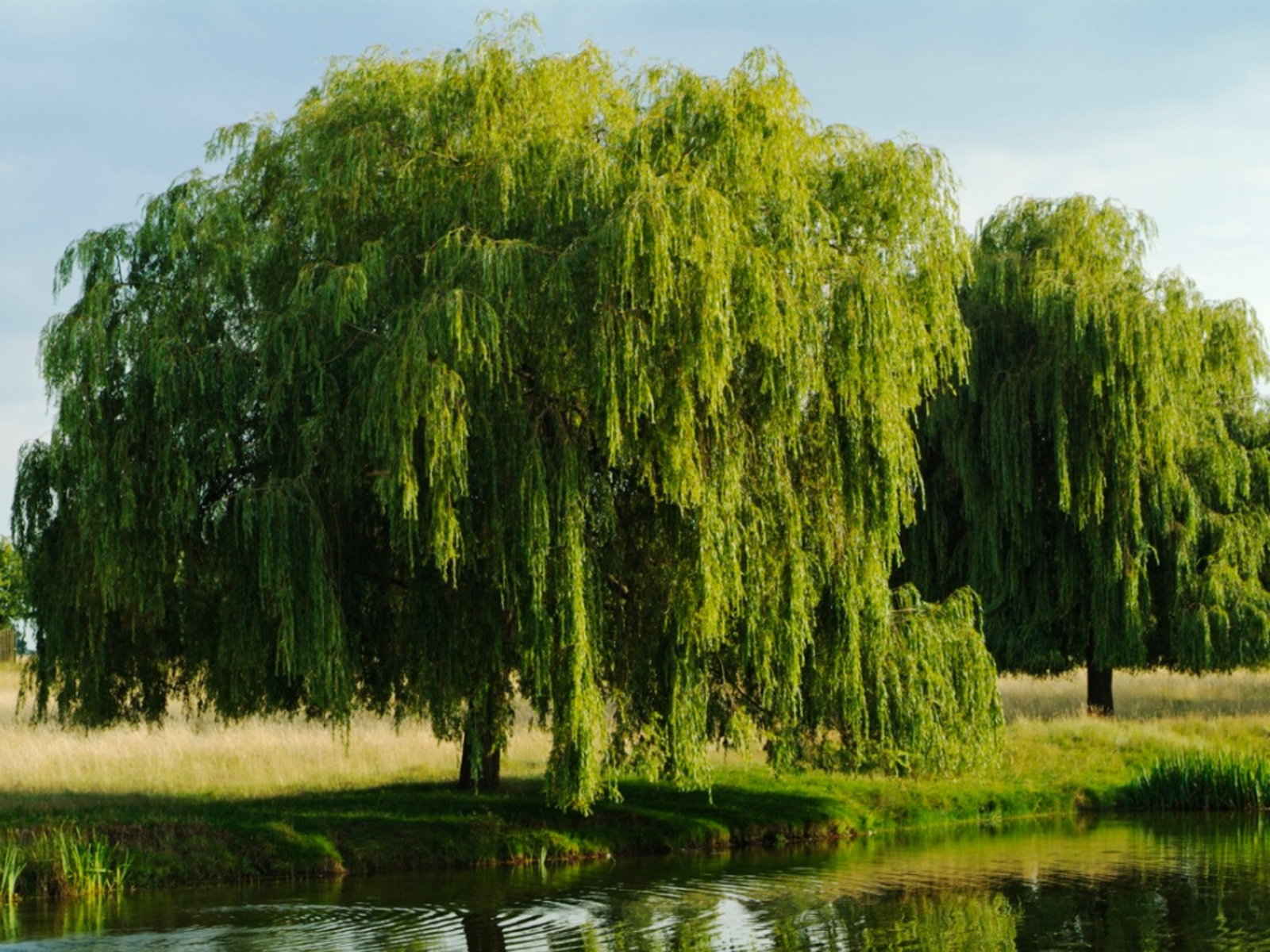
Alder
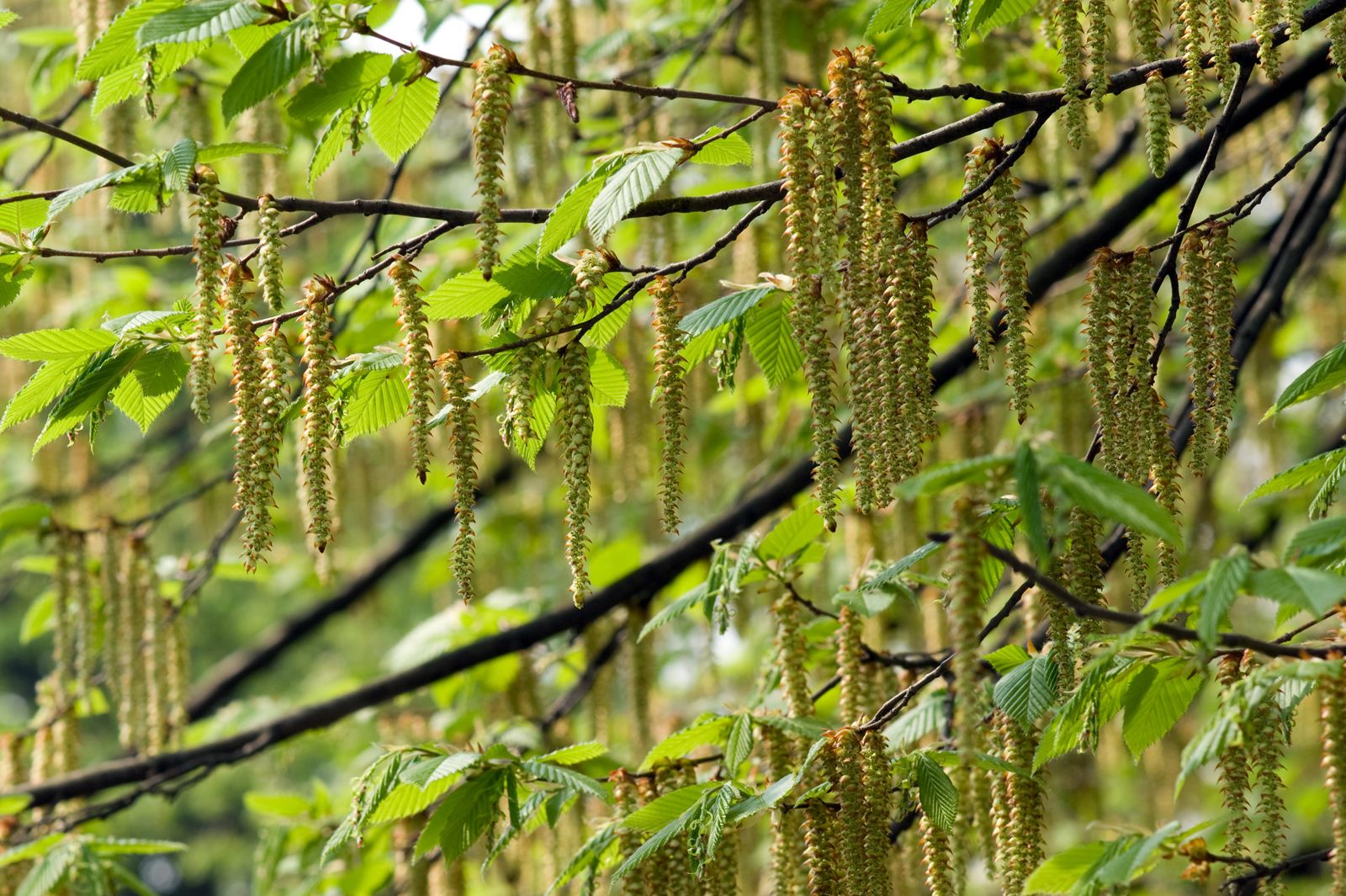
Often seen growing along rivers and streams, the alder’s link to swamps, mystery and secrecy in a mythological sense is not surprising.
When Deirdre of the Sorrows of Irish mythology eloped with Naoise, son of Usna, they fled from Ulster to Alba (Scotland), to escape the wrath of King Conchobhar mac Nessa to whom Deirdre had been betrothed. They hid from the King’s pursuing warriors in the alder woods of Glen Etibhe, where they eventually settled, and themes of hiding and secrecy connected with alder recur elsewhere in Celtic lore.
Perhaps these themes were derived from the particular atmosphere of alder woods. Where alders are not growing along rivers or streams, they form alder woods, or carrs, on wet or swampy ground. The wide bases of the alder trunks, from which small thickets of alder shoots may emerge, soon taper up to tall straight trunks, to expand into leafy canopies higher overhead.
In some parts of Ireland it is allegedly still forbidden to cut down alder trees. The link to the supernatural is strong and to some extent the fear of repercussions must linger.
The tree has wood is white when cut but soon starts to turn rusty red, a symbolic bleeding that has linked the trees to supernatural life, folklore and superstition for millennia.
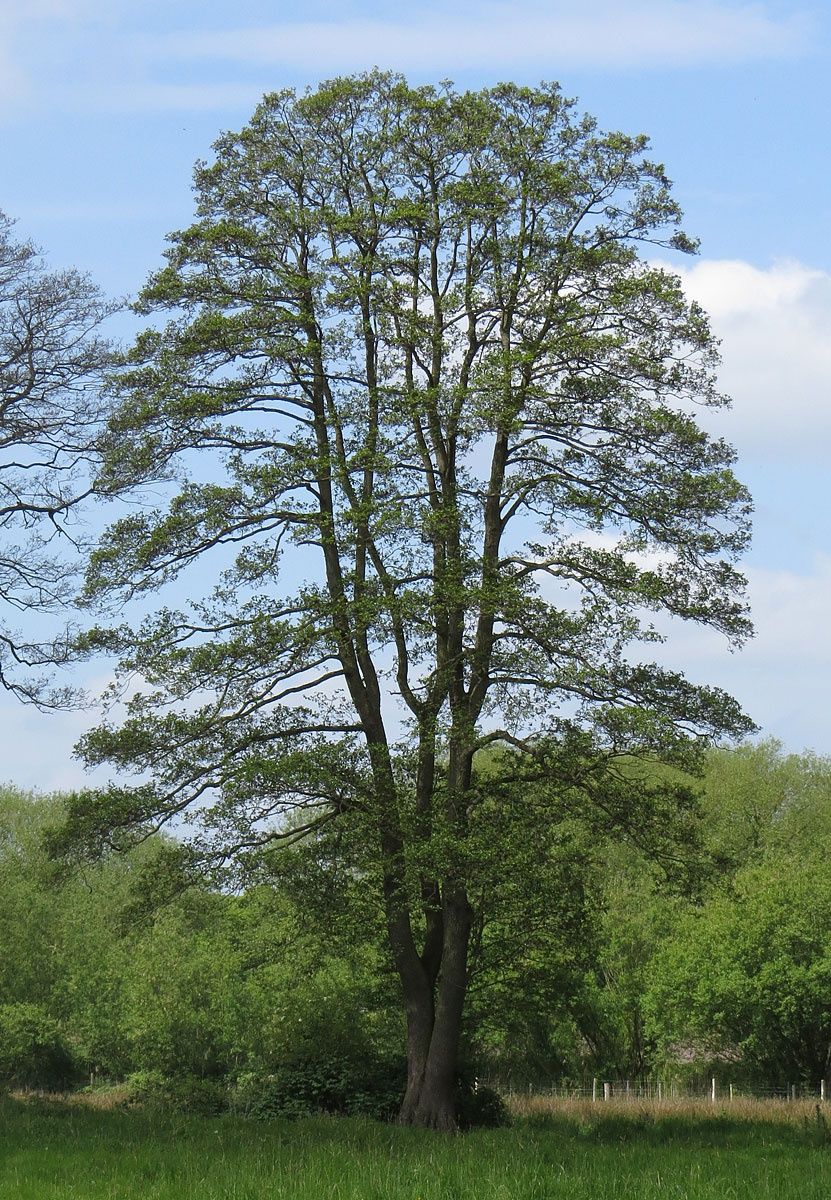
Birch

When the huge glaciers of the last ice age receded, birch trees would have been one of the first to re-colonise the rocky, ice-scoured landscape.
Hence, ecologists refer to birch as a pioneer species.
In Norse mythology, the birch was sacred to the goddesses Frigg and Freya, who are believed by some scholars to share the same origin; and in Welsh legend, the tree was linked with Blodeuwedd, the wife of Lleu Llaw Gyffes – interestingly, the Welsh equivalent of Lugh. The Irish warrior Diarmuid and his lover, Grainne, slept on beds of birch twigs when they fled from the wrath of Fionn mac Cumhaill, to whom Grainne had been promised in marriage.
Traditionally, birch is said to be full of the light of the warrior-god Lugh, and the old belief in its power to drive out evil is strong and persistent: even in Victorian times, naughty schoolchildren would find themselves on the wrong end of a birch switch; and ceremonies of ‘beating the bounds’, many of which have survived into the present day, involved the ritual tapping of local boundaries with staffs of birch or willow.
Cradles made from birch were believed to protect new-born babies from malicious spirits, and in the folklore of the Highlands, it was said that a pregnant cow herded with a birch stick would bear a healthy calf; and if the animal was barren, she would become fertile.

I hope you enjoyed this journey into some of the trees that make up European wildlife, folklore and often fantasy books. Have I missed any obvious ones? Did you enjoy the post?
Whatever the case, thankyou for reading, I hope you had fun!


To be honest, I never thought much about tree species in fiction, but this was fascinating. Plus just looking at a bunch of trees has put me in a good mood😁
LikeLiked by 2 people
Thankyou! I accidentally posted this, it isn’t 100% finished!
😭
LikeLike
Alex, that is a wonderful post!
I love trees. I do know a lot about them but this post still taught me new things that I didn’t know yet. So interesting and exciting. I have to admit that the english names for most of those trees confused me but I did recognise most from the leaves and trunks, so great!
I’m sure you put a lot of work into this and it definitely paid off. Great job!!
LikeLiked by 2 people
Thanks Marion, that’s great to hear!
LikeLike
I love this. It reminds me of a Monty Python sketch: https://youtu.be/mBcTXBhYzfM
LikeLiked by 1 person
Ha, thanks Sue!
LikeLike
Oh WOW this is an amazing post and resource, Alex! Thank you for sharing! 😍
LikeLiked by 1 person
Glad you liked it! 🙂
LikeLike
I am guilty of imagining a general patch of greenery and just moving on, lol. I love this post though. There were some familiar trees in there so hopefully, my pictures of fantasy settings will be slightly more accurate.
LikeLiked by 1 person
Cheers Peyton 🙂 glad it was useful and enjoyable!
LikeLiked by 1 person
That is very valuable … here I also find some informative blogs related celtic runes, which I share with you
https://predictmyfuture.com/celtic-runes-everything-you-need-to-know/
LikeLike